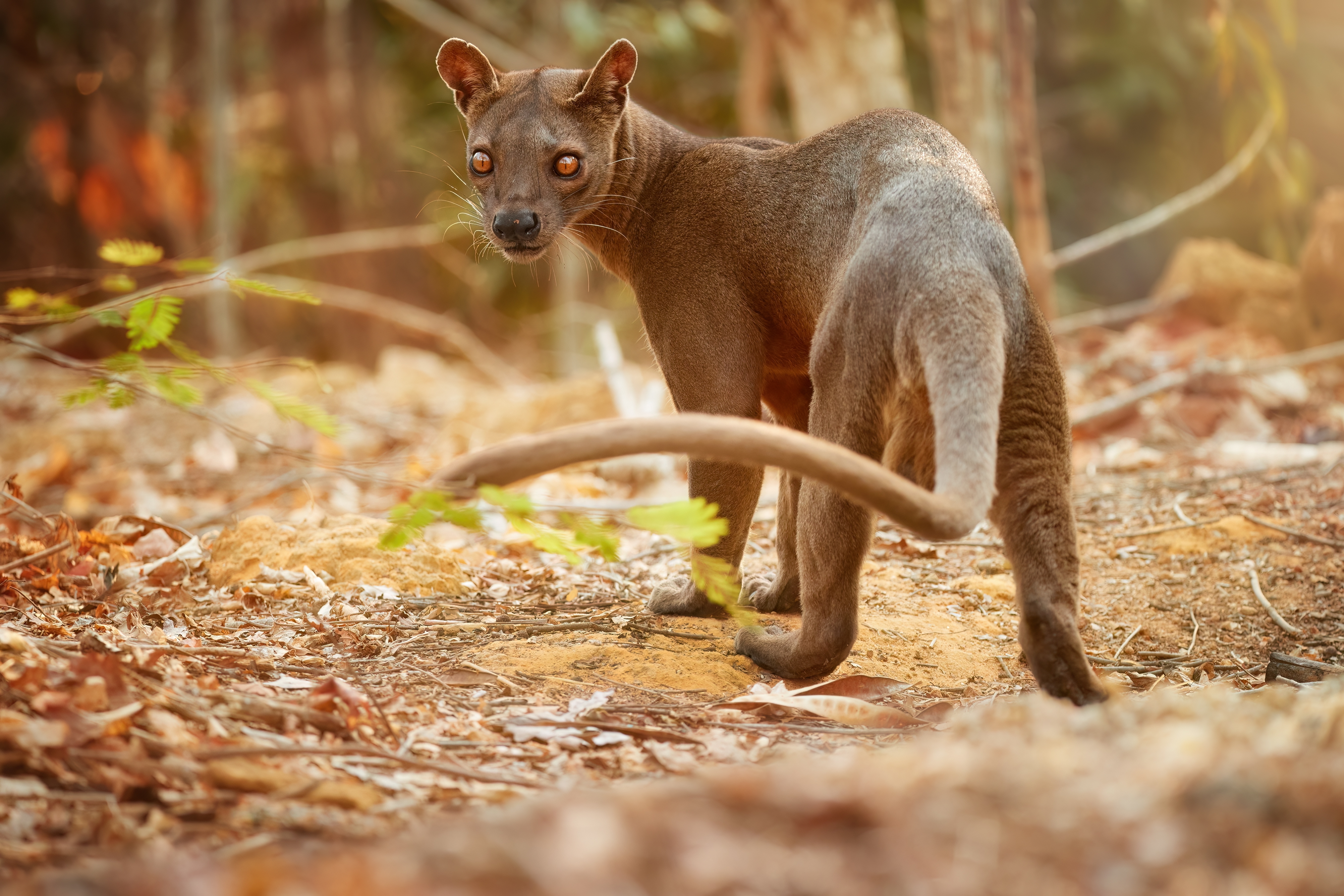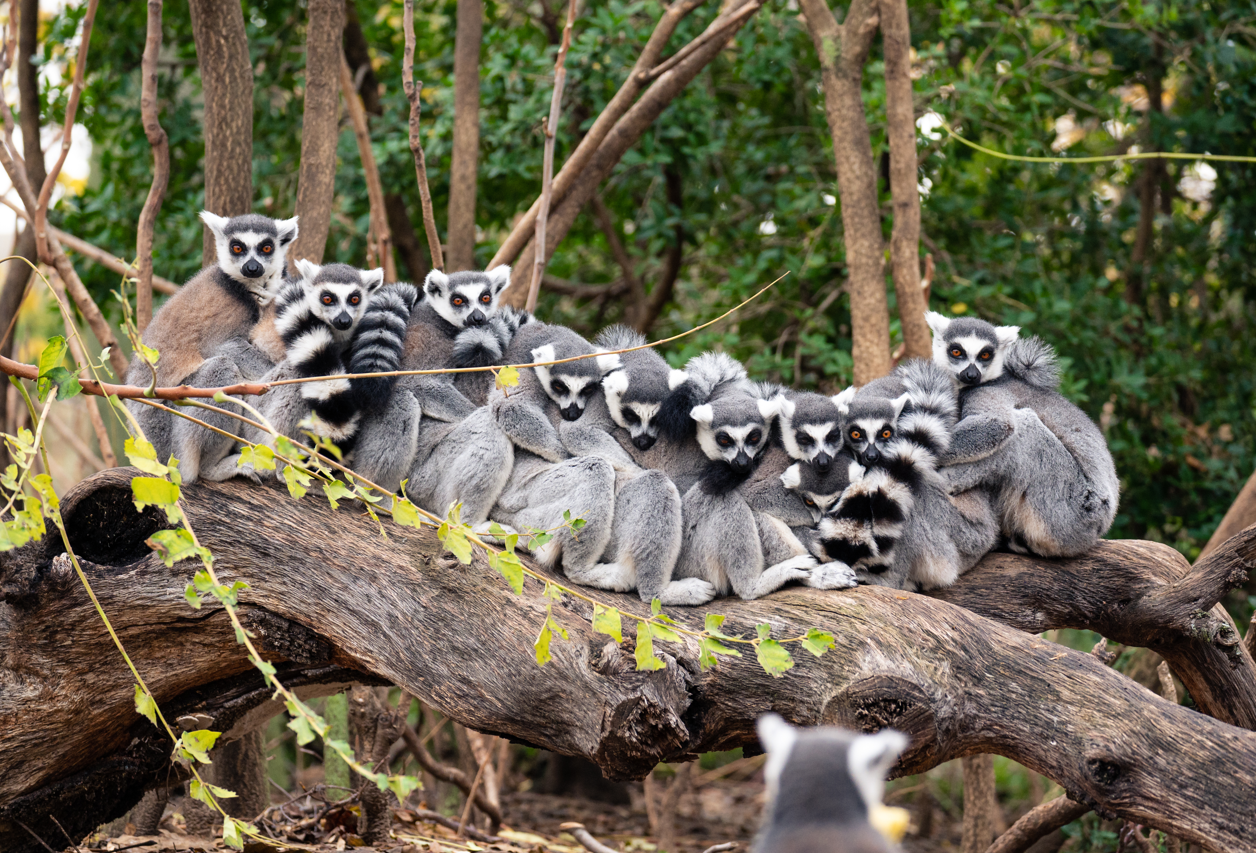When it comes to bizarre wildlife and freaky fauna, Australia and the Galápagos often steal the limelight, but Madagascar is an even stranger world unto itself. Located off the east coast of Africa, it is home to 1,314 species of native land and freshwater vertebrates, up to 90 percent of which are found nowhere else on Earth.
All of its native terrestrial mammals (not including bats) and amphibians are entirely unique to the island. So are 56 percent of its birds, 81 percent of its freshwater fish, 95 percent of its mammals, and 98 percent of its reptiles. Invertebrates like spiders and insects are trickier to study, but it’s likely their levels of endemism are also sky high.
The simple reason Madagascar has such extraordinarily unique wildlife is its long isolation. Much like Australia and the Galápagos Islands, it has been separated from larger landmasses for tens of millions of years.
Madagascar was part of the ancient supercontinent Gondwana until it fractured away in two stages: first, splitting from Africa some 160 million years ago, then breaking away from the Indian subcontinent between 90 to 66 million years ago. Ever since, it has sat off the east coast of Africa, separated by the 400-kilometer (250-mile) Mozambique Channel. Unless they can fly or swim, bridging the gap is going to be very tough for most plants, animals, fungi, and other lifeforms.
Geographically isolated from other populations, while also surrounded by distinct environments and earthly pressures, evolution by natural selection is able to take its own path, like a living laboratory. Over time, this idiosyncratic set-up led to the rise of hundreds of species found nowhere else on the planet.

The fossa is the largest mammalian carnivore on Madagascar.
Image credit: Martin Mecnarowski/Shutterstock.com
Among the island’s resident freaks is the fossa, the largest carnivorous mammal on the island. Although it looks like a cougar, it’s more closely related to the mongoose and civet, as opposed to big cats.
They also have the aye-aye, the largest nocturnal primate in the world. With its enormous eyes and uncomfortably long middle finger, this strange lemur thrives in the dark, tapping on trees like a creepy piano player to find grubs inside the bark.
Equally mesmerizing is the silky sifaka, a ghost-white lemur with a fluffy coat that looks like a mini yeti. And of course, perhaps the island’s best-known ambassador: the ring-tailed lemur, made famous by the Madagascar movie franchise.
Beyond charismatic mammals, there’s the Malagasy leaf-nosed snake, the Satanic leaf-tailed gecko, the comet moth, ploughshare tortoises, tomato frogs, and literally hundreds of others, many of which remain unknown to science.

I like to move it, move it: ring-tailed lemurs sitting on a log.
Image credit: BlackFarm/Shutterstock.com
Madagascar was also once home to some of the most famous animals to fall into extinction, such as the elephant bird. The fate of these creatures shows that the island’s expression of life is extremely fragile, as well as unique.
Per a study published in July 2025, Madagascar is home to 670 critically endangered species, the greatest number of any country on Earth, plus 98.7 percent of the imperiled lifeforms are found nowhere else on Earth.
The forces that once fostered and shielded the island’s biodiversity are quickly disappearing. In our globalized world, Madagascar is no longer remote. Human settlement, deforestation, industry, conflict, invasive species, disease, and climate change are closing in fast, and the island’s unique ecosystems, finely tuned by millennia of isolation, are woefully unprepared.
Source Link: Why On Earth Did Such Strange Animals Evolve On Madagascar?